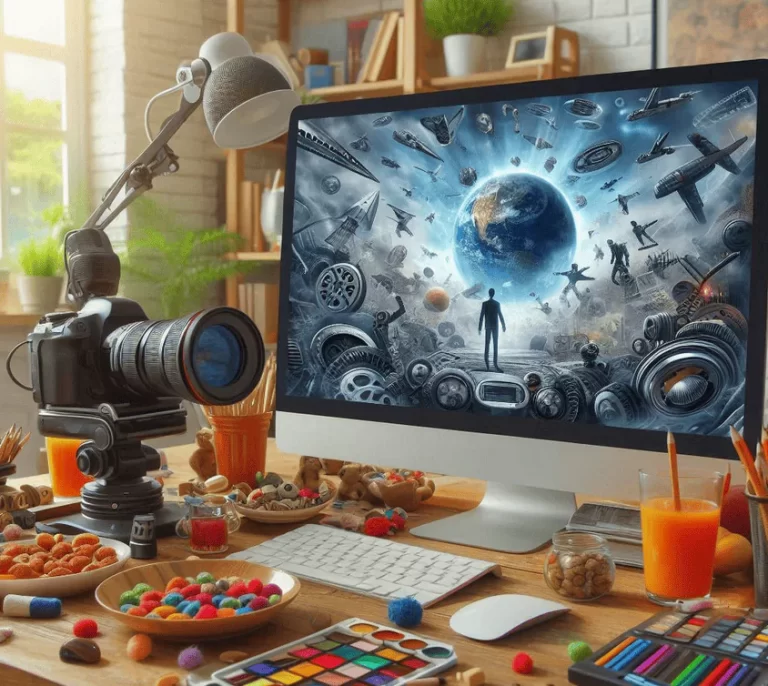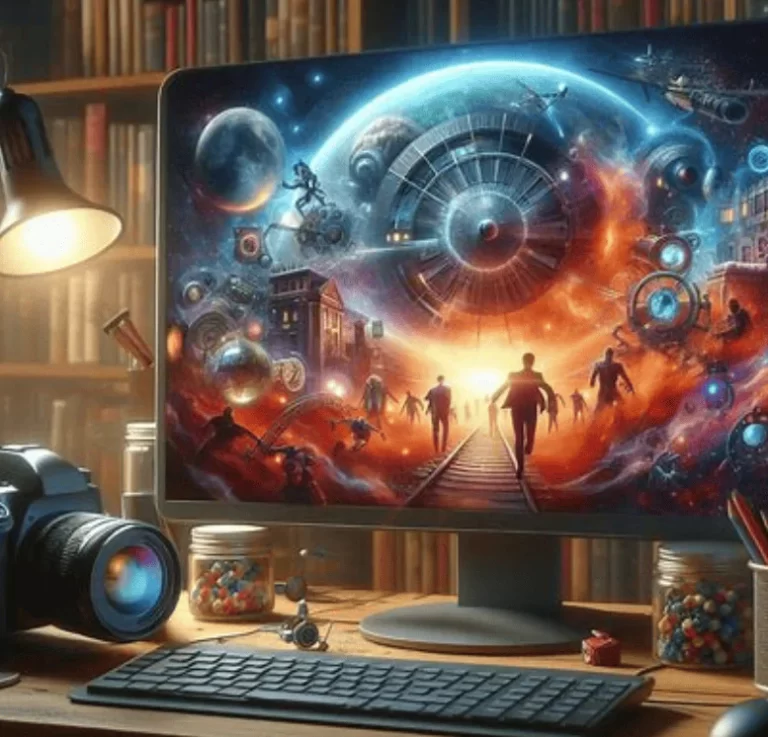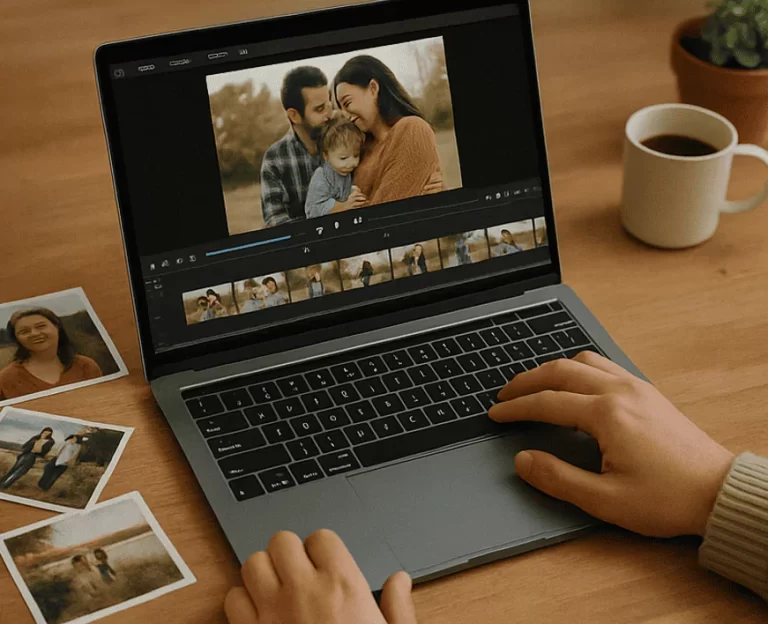
Digital Frontier In an era where technology is increasingly interwoven into every facet of human life, art has undergone a dramatic transformation. What was once confined to the traditional tools of brushes, paints, and chisels now extends to a limitless digital landscape. The convergence of creativity and technology has given birth to the Digital Frontier, an uncharted territory where artists can explore new ways of expression, creation, and interaction. This frontier is more than a space for innovation—it represents a fundamental shift in how art is created, perceived, and consumed.
From the first digital images to the rise of immersive virtual reality art installations, the Digital Frontier challenges the very notion of what constitutes art. No longer confined to the gallery walls, art has transcended into the digital ether, where the possibilities are as vast as the imagination itself. What was once viewed as a niche interest is now a driving force that is reshaping the art world, empowering artists to break free from traditional constraints and reach audiences on a global scale.
The Rise of the Digital Frontier
The concept of art has evolved dramatically over the centuries. From the classical paintings of the Renaissance to the modern abstraction of the 20th century, artists have always sought to innovate and expand the boundaries of their medium. However, it is only in recent decades, with the advent of computing technology, that a new revolution in the world of art has taken shape. This revolution has come to be known as the Digital Frontier.
At its core, the Digital Frontier refers to the realm where technology and creativity intersect, giving artists new tools to work with that were once unimaginable. The very act of creating art has changed. With a computer or tablet, artists can now produce images, sculptures, animations, and installations that are not bound by the limitations of traditional media. In this new space, art can be infinite, dynamic, and interactive. The Digital Frontier offers a wealth of possibilities, allowing artists to break free from the rigid structures of the past and explore entirely new forms of expression.
Tools of the Trade: The Technology Behind the Art
At the heart of the Digital Frontier lies an array of cutting-edge tools that enable artists to push their creative boundaries. The shift from traditional to digital media has introduced a multitude of software, hardware, and devices designed to facilitate the artistic process. These tools are not simply replacements for paintbrushes and chisels—they are catalysts for new ways of thinking, creating, and interacting with art.
Software: A New Canvas for Creation
The foundation of most Digital Frontier art lies in sophisticated software. Programs like Adobe Photoshop, Illustrator, and Corel Painter provide digital canvases where artists can manipulate pixels, blend colors, and craft intricate designs with ease. These tools allow artists to move from the initial idea to a fully realized artwork without the constraints of physical materials or time. Digital tools empower creators to work in layers, refine details, and make real-time adjustments without having to start over—a luxury that traditional art often does not provide.
For digital sculptors and 3D artists, software such as Blender and ZBrush allows them to create lifelike models and renderings that push the limits of form and structure. These applications simulate real-world materials, giving artists the ability to create highly detailed digital sculptures and animations that could not exist outside the realm of the virtual.
Hardware: Bridging the Gap Between Reality and Imagination
While software provides the canvas, hardware facilitates the interaction between the artist and the digital medium. Graphics tablets, such as those from Wacom, allow digital artists to draw, paint, and sketch as they would on traditional paper. With pressure-sensitive pens and intuitive interfaces, these tools provide a tactile experience that mirrors traditional art-making while offering the flexibility and versatility of digital technology.
For artists working in 3D, specialized devices like motion capture suits and VR controllers allow for an even more immersive experience. These technologies enable artists to sculpt and design in three-dimensional space, creating dynamic virtual worlds or highly detailed digital objects.
Breaking Boundaries: How the Digital Frontier is Shaping Art
The Digital Frontier is not just about new tools; it’s about new possibilities. The intersection of art and technology has unlocked a host of groundbreaking techniques that challenge the boundaries of traditional art forms. Here, creativity is unshackled from the rules and limitations of the past, giving artists the freedom to explore uncharted territories.
Generative Art: The Role of Algorithms in Creativity
One of the most exciting developments on the Digital Frontier is the rise of generative art. In traditional art, the artist is the sole creator, wielding brushes and tools to shape the final piece. However, in the world of Digital Frontier art, the creative process can involve the use of algorithms, artificial intelligence (AI), and machine learning. These technologies enable artists to generate complex, evolving designs that would be nearly impossible to create manually.
Generative art takes the form of images, animations, or installations created through predefined rules or algorithms. By feeding specific parameters into a computer program, an artist can produce a range of outputs that are unique and dynamic. This method challenges the conventional notion of authorship and pushes the boundaries of creativity. It asks the question: If an artwork is partially created by a machine, does it still hold the same value as a purely human-made piece?
Virtual Reality: Immersion Beyond Imagination
Another revolutionary development in the Digital Frontier is virtual reality (VR). In VR, art is no longer confined to a flat surface or a 2D screen. Instead, it becomes an immersive experience that surrounds the viewer, allowing them to step into and interact with the artwork. Artists can create entire worlds—complete with sound, texture, and movement—that exist solely within the digital realm.
With VR headsets, users can explore these worlds in 360 degrees, offering a level of immersion that traditional art forms simply cannot replicate. This transformation in how we experience art has opened new avenues for interactive storytelling, digital sculpture, and performance art. For example, an artist can design an interactive installation where the viewer’s actions shape the environment, making each experience unique.
Augmented Reality: Blending the Real and the Digital
While virtual reality takes users entirely out of the physical world, augmented reality (AR) enhances the real world by overlaying digital elements onto the viewer’s environment. Using smartphones, tablets, or AR glasses, artists can create interactive works that merge the digital and physical realms. Imagine walking down the street and seeing a 3D sculpture come to life on a building’s façade or interacting with a digital painting that reacts to your movements.
The blending of digital and physical spaces in AR opens up exciting possibilities for public art and installations. Artists can engage audiences in new ways, allowing them to become active participants in the artwork’s creation. The potential for AR to transform how we experience the world around us is vast, as it brings digital art into public spaces and makes it more accessible to everyday life.
The Globalization of Art: Connecting Through the Digital Frontier
In addition to providing new ways of creating art, the Digital Frontier has radically transformed how art is shared and consumed. The digital world has eliminated geographical barriers, enabling artists to reach global audiences with ease. Social media platforms, online galleries, and digital marketplaces allow creators to showcase their work to a worldwide audience without the need for physical exhibitions or galleries.
Platforms such as Instagram, Behance, and DeviantArt have become digital hubs where artists from all corners of the globe can share their work, gain recognition, and connect with others. These platforms have created a democratized art world, where talent, rather than access to traditional institutions, determines visibility and success. Artists are no longer reliant on galleries or curators to validate their work—they can directly connect with their audience and cultivate their own following.
Moreover, the rise of digital marketplaces has led to the creation of new revenue streams for artists. The popularity of NFTs (non-fungible tokens) has revolutionized the art market by allowing digital artworks to be bought, sold, and traded as unique, verifiable assets. This blockchain technology has opened up new opportunities for artists to monetize their work while ensuring the authenticity and ownership of their creations.
The Future of the Digital Frontier: What Lies Ahead?
As technology continues to evolve, so too will the Digital Frontier. The possibilities for artistic expression are boundless, and the future holds promise for even more groundbreaking innovations. AI and machine learning will likely play an even greater role in the creative process, allowing for more complex generative art and autonomous art creation. Virtual and augmented reality will continue to push the boundaries of immersive art experiences, offering new ways for artists to interact with their audiences.
Furthermore, as digital technologies become more accessible, the barriers to entry for new artists will continue to diminish. The Digital Frontier will remain a space where creativity flourishes, where artists can collaborate, innovate, and explore new forms of expression. What was once considered experimental or niche will become the norm, and the boundaries between technology and art will blur even further.
Conclusion: Embracing the Digital Frontier
The Digital Frontier is a vast and evolving landscape where art and technology meet to form new, innovative, and immersive experiences. From generative art to virtual reality, digital tools have revolutionized how artists create, interact with their work, and engage with audiences. The democratization of art, fueled by digital platforms and technologies, has opened up new possibilities for artists worldwide.
As we continue to venture into this uncharted territory, the potential for creativity is limitless. The Digital Frontier is not just a new medium—it’s a new way of thinking about art, technology, and the world around us. With each new innovation, we move closer to a future where the boundaries of artistic expression are no longer confined by traditional media. In this new era, the artist is free to explore, experiment, and create without limitations, making the Digital Frontier a true haven for imagination.



